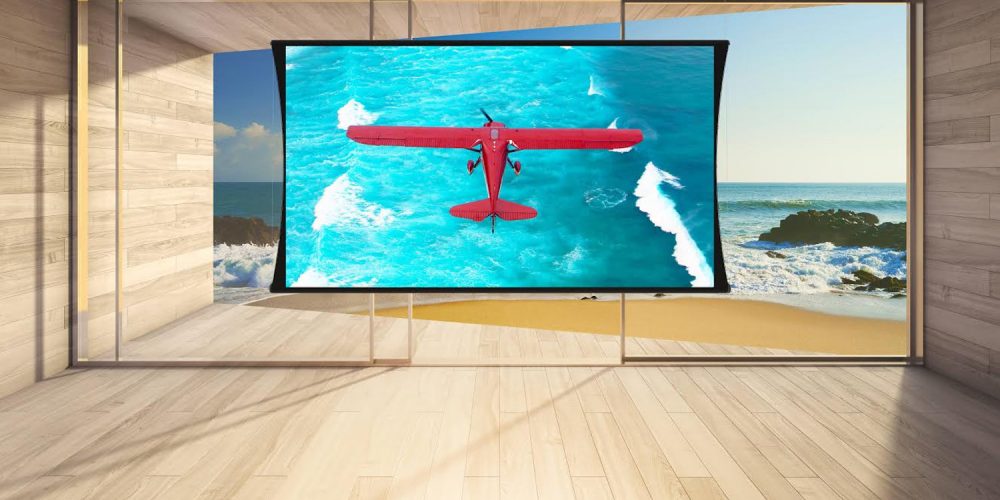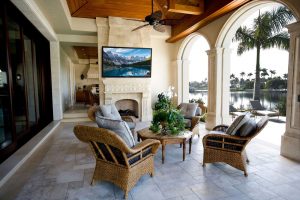Top 10 Trends in Smart Home Technology
Top 10 Trends in Smart Home Technology
A look at some of the innovations that will shape the way you live and enjoy your home.

Home technology is always moving, always improving, always promising to provide ease and convenience to our lives. So what sort of innovations stand to make a big impact? We caught a glimpse of the very near future at the CEDIA (Custom Electronic Design & Installation Association) Expo held recently in Dallas. Here are 10 developments you’ll want to keep an eye on.

- Voice Control. The popularity of Amazon Alexa has spawned the development of all types of voice controllable products: lights, thermostats, music systems, and complete home automation systems. With leading companies like NEST, Sonos, and Lutron leading the charge, and Amazon making it easy for just about anyone to develop voice-controllable products, it’s a sure bet that at some point you’ll be managing at least a few facets of your household by simply uttering your demands. “We want to make Alexa the focal point of the home,” said an Amazon spokesperson during a demonstration of the technology at the 2016 CEDIA Expo.
- Small Systems. Not everyone lives in a mansion or has money to burn on fancy, expensive home electronics products and systems. Thankfully, manufacturers are continuing to streamline their core products into solutions suited for owners of small homes and modest budgets. Today, you can automate portions of your house for $500 or less.

- Nice-Looking Networking. Why this didn’t happen sooner is a mystery, but finally you can find a Wi-Fi router for your home that’s attractive enough to keep out on the kitchen counter instead of tucked away in a closet. Left in the open, a router is able to perform better than it ever could hidden away somewhere in your house.
- Bigger Touchpanels. A few years ago the iPad became a favorite tool of homeowners for monitoring and managing smart devices; however, dedicated touchpanels appear to be making a comeback as the preferred home control dashboard, and for good reason. Unlike an iPad and other tablets that juggle lots of functions, touchpanels are designed to do one job and do it really well: display the status of lights, thermostats, A/V equipment and more, and launch commands to these devices. In addition to experiencing a revival, the touchpanels that have recently hit the market are larger than ever before, sporting 12-inch, full-color screens—enough real estate to provide homeowners with lots of information at a single glance.

Aprilaire’s newest thermostat factors in humidity levels and the outdoor climate to create a comfortable and healthy indoor atmosphere.
- Indoor Air Quality Monitoring. Sensors that monitor the air in your home for VOCs, (volatile organic compounds), CO2 (carbon dioxide) and humidity levels will become more commonplace—even better, these sensors will be able to trigger systems that can help expel bad air from the home and introduce clean, healthy air into it.

- Motorized Shades Make an Impact.There’s been a noticeable upswing in the popularity of motorized window treatments, as manufacturers continue to build their product portfolios with sensational new shading solutions. Whether your windows span an entire wall, are curved, require covering for privacy, security or something else entirely, there’s a solution. And more and more these solutions are becoming easier to integrate into a complete home control system.
- DIY Solutions from Unlikely Suspects. So you bought a home automation system and paid to have it installed by a professional. Good decision. There’s no better guarantee of satisfaction than having a pro configure and install your smart home systems. However, there may come a time when you’d like to add a component to your system, say a new security sensor in your newly renovated rec room. Do you really need to have a pro make a house call to set it up? Increasingly, manufacturers of home systems are saying “no” to the necessity for a pro to handle system upgrades. They are even going to far as to create consumer websites where you can go to order additional DIY-friendly components to enhance your professionally installed home automation system.

SunBriteTV’s Veranda series of outdoor TVs sells for 20 percent less than its outdoor lineup did last year.
- Outdoor Entertainment Gets More Affordable. Outdoor TVs have become a hot commodity—a natural consequence of the growing construction trend of outdoor living spaces. Everybody wants and outdoor TV to bring some of the creature A/V comforts of indoor spaces outside, but until recently, few families could afford them. Leading manufacturers of outdoor TVs have slashed their prices significantly. Weather-hardy TVs from Peerless-AV, for example, cost 20 percent less than they did last year; SunBriteTV’slineup costs twice as much as a standard TV instead of four times as much. Expect cost-cutting to continue.

Screen Innovations’ new Zero-G screen sets a new design standard in home viewing. The screen seemingly levitates in mid-air.
- Versatile Viewing Options. Home theaters have always provided homeowners with a bevy of choices, as speakers, screens, and components in terms of price, performance, and cosmetics. But consumer needs are always changing; to keep pace with the trend toward smaller spaces and modern designs, manufacturers of screens have developed innovative new ways to enjoy video. Short throw projectors built into cabinetry, for example, offer homeowners the opportunity create a killer home theater in half the space a traditional video projector does—and goes virtually unnoticed. Screens that seemingly float mid-air offer an interesting way to integrate a big viewing surface into any room of the house.
- Maximum Integration. The beauty behind a smart home is the amalgamation of products that somehow all work together as one well-oiled machine. The seamlessness of operation doesn’t happen by accident, however. It requires a substantial amount of coordination and cooperation among the manufacturers of each component that comprises a complete system. Lights need to be able to talk to security systems, which also need to talk to thermostats, which communicate with motorized draperies, which trigger A/V equipment, and so on. Big corporations like Legrand and Core Brands are leveraging home systems integration through acquisitions of leading players in the home systems industry to form conglomerates of companies all working toward the common goal of developing comprehensive systems of tightly integrated components. It’s one-stop shopping for homeowners looking for all the pieces that make up a smart home: lighting, shading, security, HVAC, A/V, and more.




